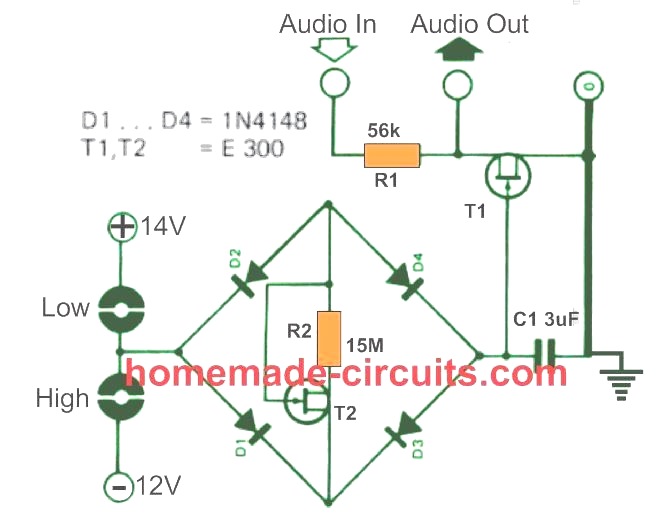This touch volume control circuit has two touch pads which enable the user to increase or decrease the volume of an audio amplifier simply by touching the relevant touch pads.
The advantages of this solid-state volume control are: very long life due to the absence of any wear and tear, quick and easy finger touch control, and low distortion.
How the Circuit Works
The circuit works like an electronic attenuator, configured to sense and respond to finger touch on alternate touch pads. The FET T1 is wired to simulate a variable resistor, across a resistive divider network T1, R1.

The resistance formed across T1 is determined by the negative voltage created across capacitor C1.
When the touch pads associated with the negative supply line is contacted with finger, a current via D2, R2 and D3 charges the capacitor C1, with a delay time decided by the values of C1, R2.
When the negative charge developed across C1 is sufficiently high, T1 is inhibited from conducting anymore, which allows an un-attenuated audio signal to pass through. This enables the volume to be increased
In order to reduce the volume of the audio, the user simply has to touch the pair of pads connected with the positive side of the supply.
This causes C1 to begin discharging, so that T1 again gets more conductive, and diverts the audio towards the ground line. This causes a corresponding amount of attenuation on the audio signal, and the volume gets reduced proportionately.
The amount of volume to be attenuated or increased will depend on the time for how long the touch pads are kept contacted with the finger.
The FET T1 simply behaves like a linear resistor whose gate bias is modulated by the audio signal input.
The output distortion is reasonably low as long as the input audio signal is not exceeded 30 mV level.